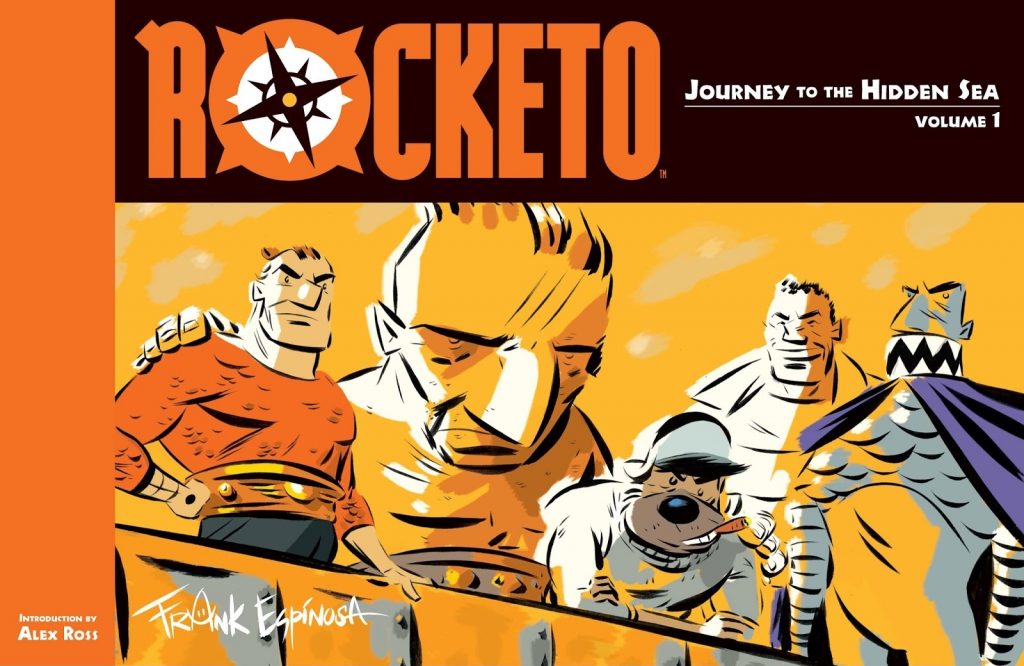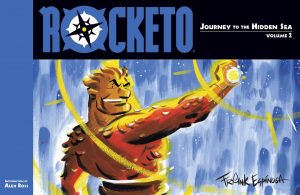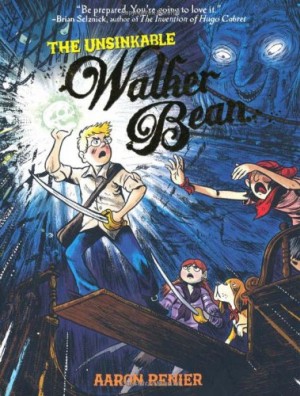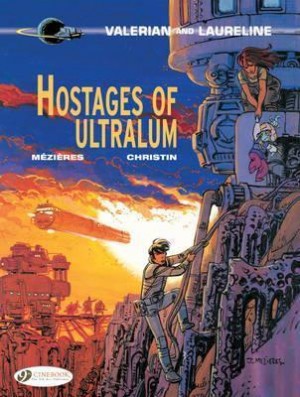Review by Ian Keogh
Before disappearing back into the world of animation, Frank Espinosa supplied two volumes of the quirky landscape format adventure series Rocketo, Eisner Award nominated on its original publication in 2006.
Rocketo picks up 2000 years since an event referred to as the Great Shattering, and classic adventure newspaper strips are a big influence. Espinosa is able to convey the wonder of 1930s Flash Gordon or Tarzan with a prodigiously creative imagination dragging the reader into new experiences and circumstances. His protagonist Rocketo Garrison is a Mapper, an explorer of unknown territory passing on his knowledge to others via holographic projections, but in his time with hereditary talents that enabled him to find his way on a planet no longer having a magnetic field. He’s also brave and resourceful, providing a better chance of survival against the many exotic creatures of this dangerous Earth. Espinosa’s equally taken with maps, as precise definition of locations and their characteristics defines the series, the extent of Espinosa’s ambition apparent from the world map on the title pages, fracturing the land masses as we know them. The sea levels have risen greatly to envelop plenty of today’s nations and have created vast new passageways between them.
Espinosa’s art has a loose storyboard urgency, figures and objects created not by filling in lines, but applying dark lines to white shapes, sometimes thick, expressive lines with a glorious spontaneity to them. Alex Ross, whose approach couldn’t be more different, is a big fan and provides an introduction used for both collections. Espinosa adds to the distinct look via a vibrant colour sense, using hardly any to create an atmosphere. Very occasionally his sense of movement drops into abstraction during battle scenes, making it difficult to distinguish what’s happening, but otherwise Rocketo features first rate art from start to end.
Like the adventure strips he so admires, Espinosa infuses Rocketo with a spirit of optimism, that anything can be achieved with guts and ingenuity, exemplified by the title character whose biography occupies a fair portion of the page count, beginning with his idyllic infancy. As a young adult he meets master of skulduggery Spiro Turnstile, and that’s when the story really takes off. The narration is matter of fact, recordings of Rocketo looking back on past escapades, but these relate constant wonders. Marie Taylor is credited as co-writer, but there’s no indication if this extends to conceptual input. If so there’s some credit due.
This opening volume takes Rocketo on a journey he’s imagined since childhood, one that elevates him to the stature of his illustrious forebears and one that’s not completed here. Journey to the Hidden Sea concludes in volume two
However, we’re not finished yet. Admirers of Espinosa’s art can luxuriate in thirty pages of sketches, maps and illustrations, some by Espinosa and some by artists not known for comics, but wonderfully talented at producing their interpretations of Espinosa’s world.





